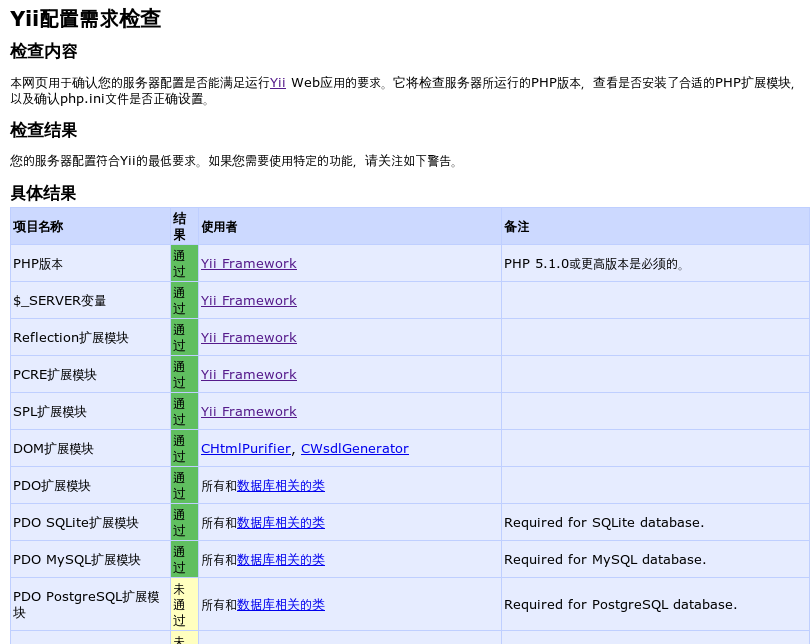Home >Backend Development >PHP Tutorial >Yii Framework Official Tutorial Supplement 2 - Getting Started: Installing the Yii Framework
Yii Framework Official Tutorial Supplement 2 - Getting Started: Installing the Yii Framework
- 黄舟Original
- 2017-02-11 09:20:591555browse
Yii installation consists of the following two steps:
Download the Yii framework from yiiframework.com.
Extract the Yii compressed package to a Web-accessible directory (such as your Web root directory/www/wwwroot/).
Tips: It is not necessary to install in the Web directory. Each Yii application has an entry script, and only it must be exposed to Web users. Other PHP scripts (including Yii) should be protected from web access as they could be exploited by hackers.
Requirements:
After installing Yii, you may want to verify whether your server meets the requirements for using Yii. Just enter the following URL in the browser to access the requirements. Detection script:
http://www.php.cn/

The above is a partial screenshot of the detection results.
The minimum requirement for Yii is that your web server supports PHP 5.1.0 or higher. Yii is tested with the Apache HTTP server on Windows and Linux systems. Theoretically, Yii can also work normally on other web servers and platforms that support PHP 5.1.
It should be noted that not all extensions in the above detection results must be installed. You only need to install those that are marked as required by the Yii framework, such as PDO. Others can be installed as needed according to your own needs. .
Installation:
Yii installation is very simple, just copy the downloaded framework folder to the corresponding path. For security reasons, it is best not to place this folder in the web root directory. If you are creating multiple sites on the same server, it is best to place the framework folder in a location that is convenient for each site to read, so that when updating the Yii framework, you only need to update it in one place.
The above is the Supplement 2 of the Yii Framework official tutorial - Getting Started: Installing the Yii Framework. For more related content, please pay attention to the PHP Chinese website (www.php.cn)!

